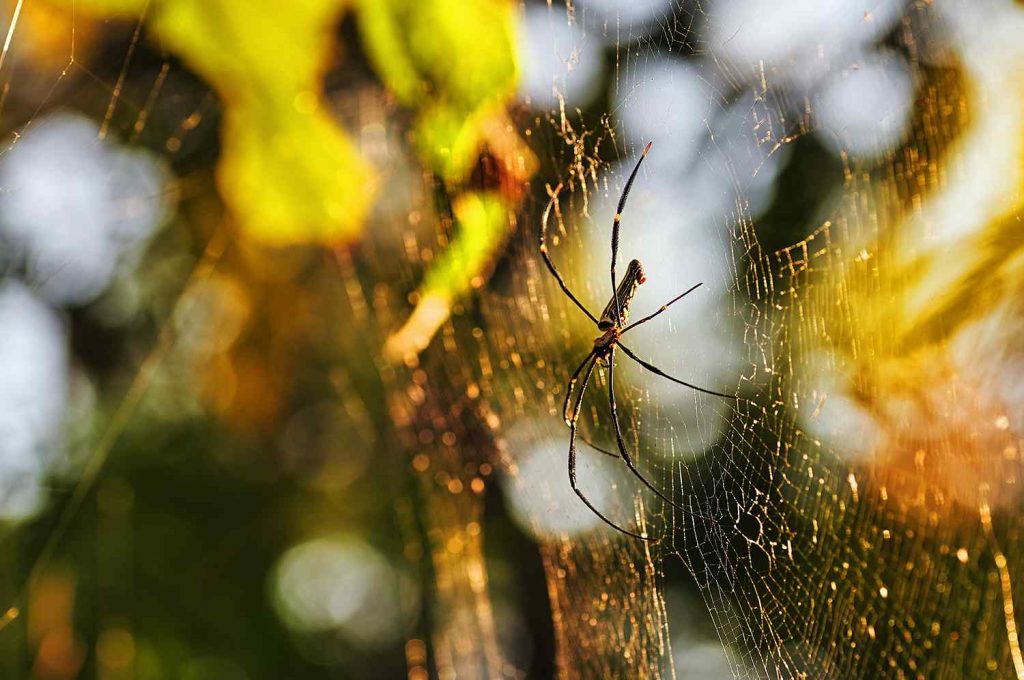California is known for a vast number of unique species of spiders, many of which you’re unlikely to find outside of California state borders.
Oftentimes, we like to preserve our spider populations for their helpful contributions to the ecosystem. However, when spiders start to invade your property, pest control may be in order!
As always, we like to keep Northern California residents up to date about the kinds of flying insects we may encounter here. Today, we’re going to talk about the phenomenon of spider webs floating in the air. Do floating webs indicate that some spiders can fly?
The answer is, “Not exactly.” Read on to learn everything there is to know about spider ballooning in Northern California.
So, Why Are Spider Webs Floating in the Air?
We have often heard clients say that they’re noticing webs floating in air, particularly around their trees. Once they discover that these webs are, in fact, created by spiders, the next question is: “Can spiders fly?”
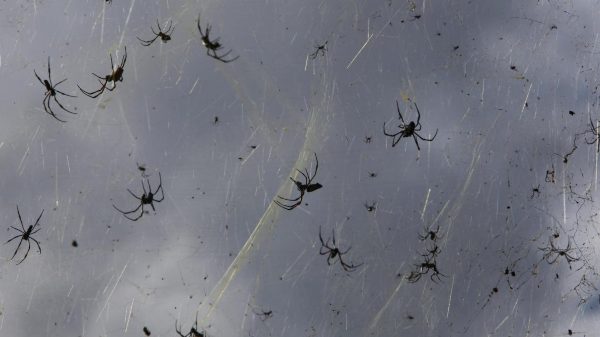
Spiders are not considered your typical flying insect. They don’t have wings and they can’t fly whenever they want or control their flight patterns. Those floating webs are remnants of the act of ballooning, a habit many different species of spiders developed over the course of their evolution.
The floating webs are made from the same spider silk used to ensnare prey and build webs. When you see loose strands floating around, it’s likely that you’re witnessing the third usage of spider silk: ballooning (also known as kiting).
Spiders use their silk to take flight, which enables them to travel as high as 3 miles into the air–and even across oceans. How do they do it?
How Does Spider Ballooning Work?
For decades, scientists and spider enthusiasts assumed that spiders were essentially windsurfing. The belief was that they were able to stretch out their legs and release enough silk to catch a strong breeze and take flight.
The real ballooning process is far more interesting and involves the detection and use of electricity. To this day, you’ll find sources claiming that spiders are taking advantage of either a convective air current or a vertical wind speed gradient. However, we are here to set things straight once and for all and give you the true, electric scoop on ballooning.
Spiders have tiny little hairs on their many legs and feet that enable them to perform trichobothria. No, it’s not a magic trick–although it certainly seems like magic!
The air contains about 100 volts of electricity per meter. In other words, or above-ground air is naturally rich in electricity. Trichobothria enables spiders to detect electric fields that are strong enough to propel them.
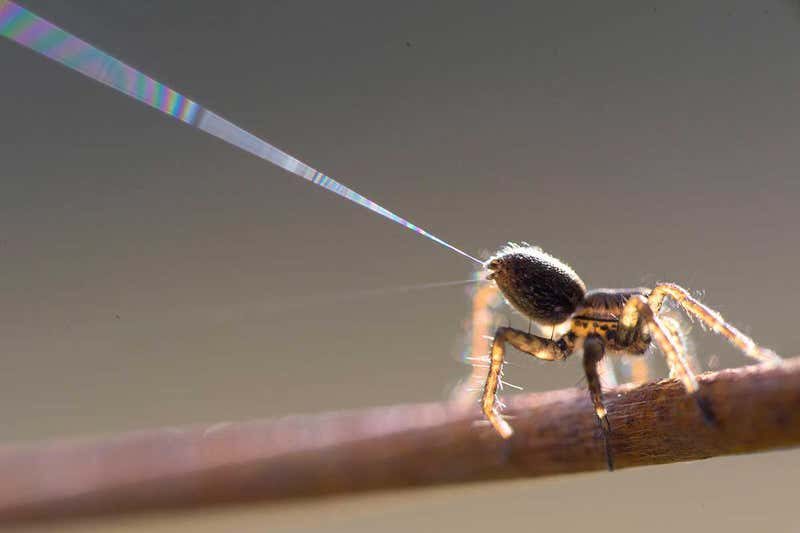
When spiders who are looking to take flight do detect an appropriate electrical field, they change their physical behavior in preparation. Often, a spider who is looking to balloon will climb something thin and vertical, like a twig. Then, they will reach some of their upper legs out wide, release a strand of silk that takes on a triangular shape (like a parachute), and move through the air!
The History of Discovering Ballooning Spiders
How did we discover the phenomenon of ballooning spiders? After all, spiders that are traveling 3 miles over the ocean aren’t likely to have any visitors along the way.
Since the 17th century, mankind has noted that certain silk-producing species appeared to be traveling by air. These species included spiders, spider mites, and moth larvae.
In the 1800s, Charles Darwin began to investigate the phenomenon more closely. He was inspired to do so after discovering spiders aboard the HMS Beagle, a ship that departed from England to travel down to South America and around the world. By the time Darwin noticed these spider webs (and the thousands of spiders who made them), they were already 60 miles away from the Argentian coast.
Using Airplanes to Catch Spiders In the Act of Flying
After decades of speculation, the US Department of Agriculture decided to conduct research on spiders and their flying abilities beginning in 1924. It was in 1926 that one of the researchers suggested that they attach insect traps to airplanes and see what turned up on cross-continental flights.
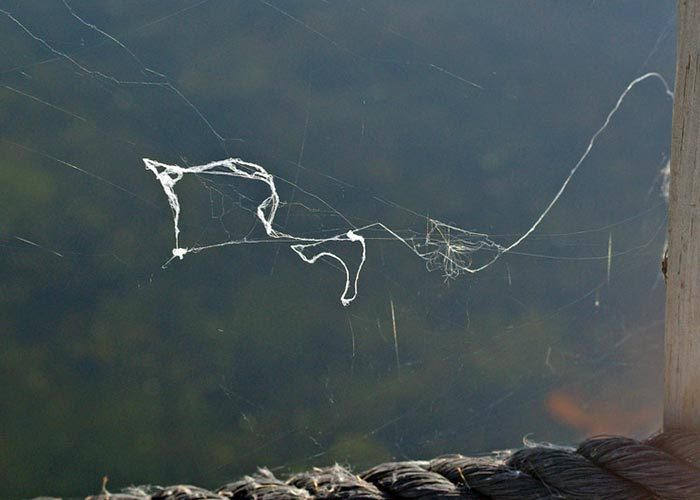
Some of these flights traveled as high as 15,000 feet. Some took off during the day, while others took off at night. The objective was to discover not only how high spiders could travel by air, but also when they were doing so.
In the end, the insect traps caught nearly 29,000 different specimens. Before you panic, we should tell you that most of these specimens were the kinds of creatures you’d expect to find in the air: butterflies, moths, flies, bees, and other winged insects. Among this catch was around 1,400 spiders.
Perhaps one of the most important (and relieving) discoveries made during this experiment was that most of the ballooning spiders were very, very small. That’s right! You’re not going to see tarantulas or wolf spiders soaring through the air.
When Do Spiders “Balloon” Most Often?
Ballooning is typically limited to size, and most of the time, spiders that weigh more than 1 milligram are not good candidates for ballooning. Plus, ballooning is a dangerous feat for spiders, and many adult spiders are wary to give it a shot. As a result, most spiders that you see in the air are recent hatchlings.
Why do hatchlings, in particular, choose to balloon? The theory is that it’s an act of survival.
Masses of spider eggs can hold up to hundreds of spiders. When they hatch, these spiderlings are hungry and there’s a lot of competition for food when they’re so densely packed–and it can even lead to cannibalism. In order to improve their odds of getting a bite to eat, spiderlings will often balloon away from the nest to uncharted territories.
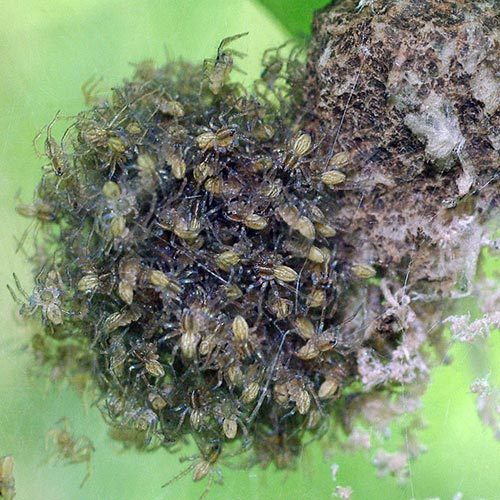
What does this tell us about when to expect spider ballooning? Most of the time in Northern California, spiders hatch in the spring or fall seasons. As a result, this is when you’re most likely to encounter ballooning spiders–or the remnants of their flight patterns.
That being said, smaller species of spiders may balloon all year round. It’s not altogether surprising to catch a spider ballooning in the summer!
Should I Be Concerned About Ballooning Spiders?
We are the first to admit that the idea of an airborne spider is a tad disconcerting. However, is it something that you need to worry about, particularly in relation to your home?
For starters, spiders aren’t likely to try to fly around your home. Accessing the kind of electrical fields won’t be as easy and they probably won’t experience that same instinct to fly when they’re contained inside your walls. In other words, spiders aren’t likely to balloon around your house.
That being said, we mentioned earlier that spiders can actually take flight over the ocean and travel to areas where they are not native. As pest control professionals, we are often on the hunt for invasive spider species that make their way to California.
Some of the most problematic invasive species we’re starting to find around these parts are brown widow spiders. If you see any of these leggy creatures roaming around, you should let us know right away.
So, When Are Spiders a Problem?
Ballooning is a strange and fascinating subject when it comes to our arachnid neighbors. However, it’s not something we really need to worry about on a day-to-day basis.
Instead, spiders become worrisome when they’re poisonous or when they’ve infested our homes. If you notice any spider egg masses in your home, you’re going to want to contact us before the spiders begin to hatch. Remember, those masses can hold hundreds of spiders, and it’s a lot easier to deal with them before they hatch!
Dealing With Spider Infestations
If you’ve ever noticed spider webs floating in the air, you’ve probably felt that pang of fear that spiders are capable of flying. We hope that our guide to spider ballooning has cleared up some of your questions and concerns, particularly in regard to how ballooning may affect you or your home.
If you have a spider infestation in your home or on your property, that’s a separate issue. When we handle spider infestations, we tackle two different problems. The first is the infestation that has already taken hold and the second is any of the entry points that allowed them in, to begin with.
If you need spider control in Northern California, we’re here to help. Find out more about how we handle spider control and book your appointment today.
